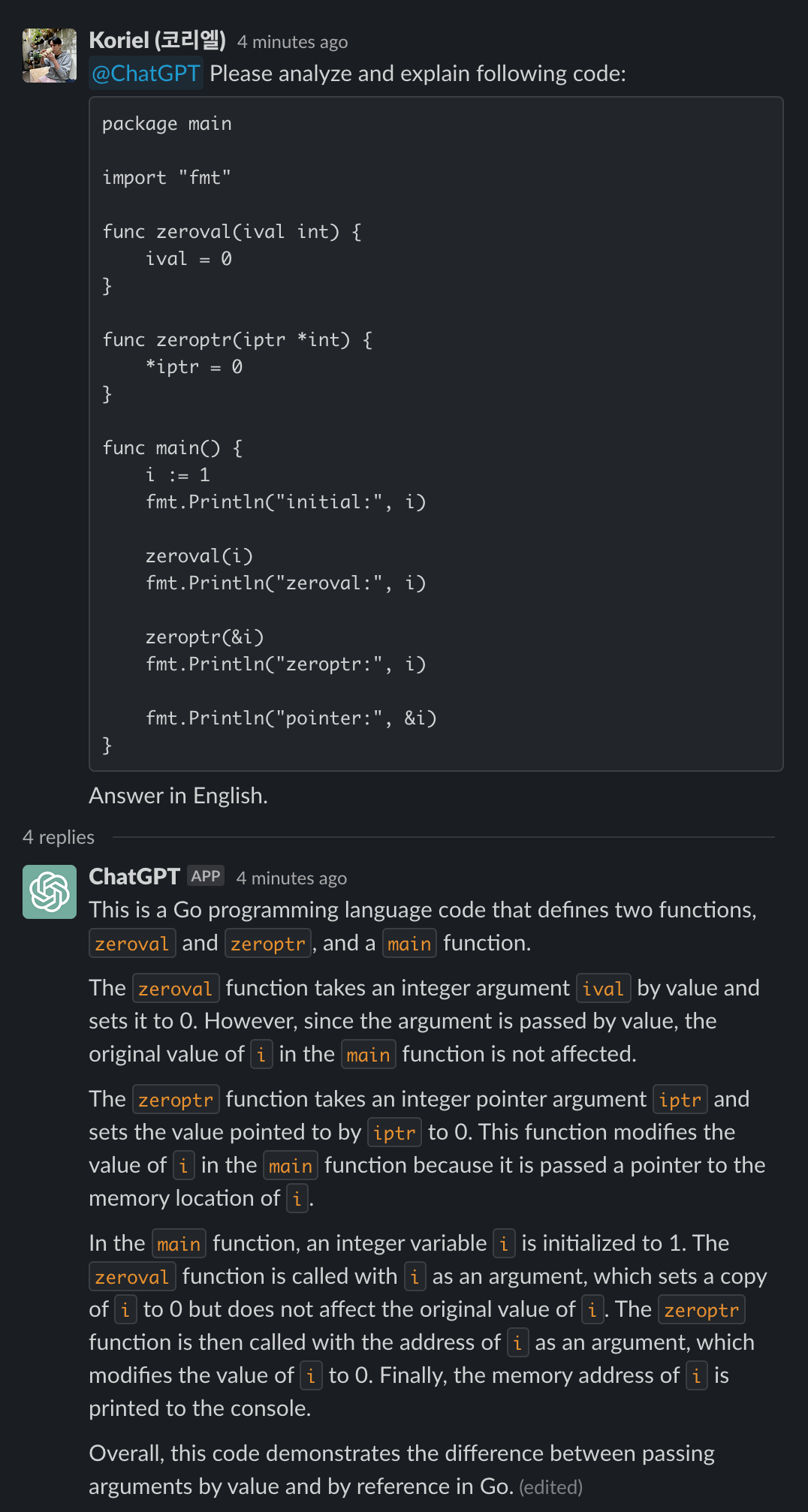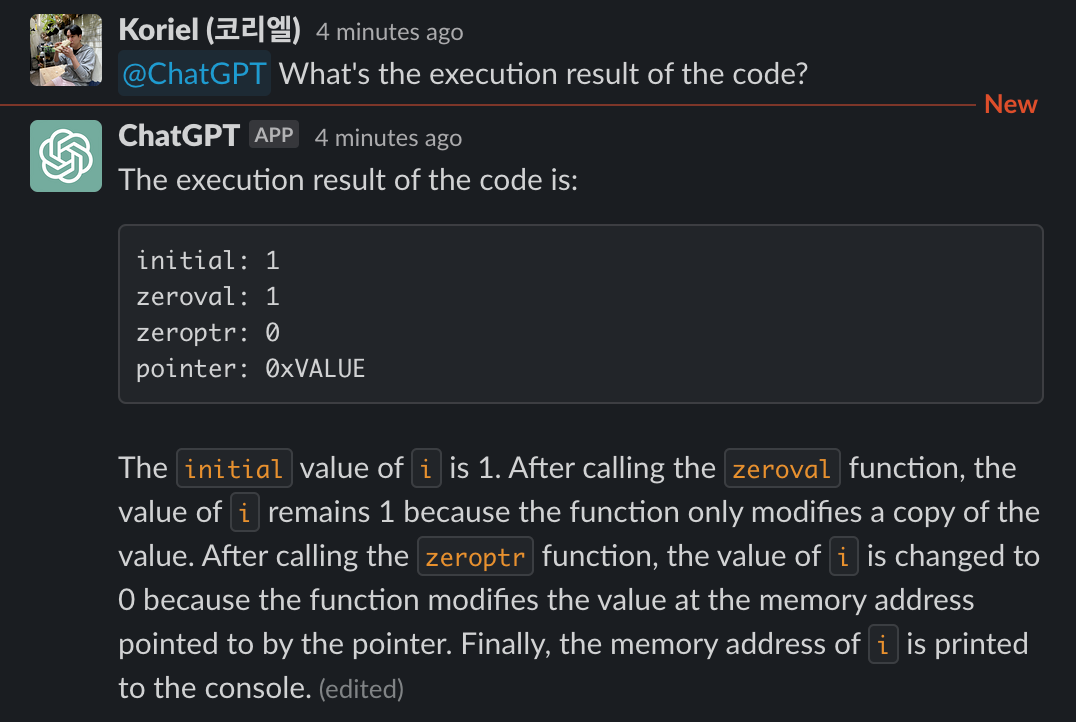Prompt
I asked my ChatGPT Slack Bot to analyze and explain some golang code like below.
@ChatGPT Please analyze and explain following code:
package main
import "fmt"
func zeroval(ival int) {
ival = 0
}
func zeroptr(iptr *int) {
*iptr = 0
}
func main() {
i := 1
fmt.Println("initial:", i)
zeroval(i)
fmt.Println("zeroval:", i)
zeroptr(&i)
fmt.Println("zeroptr:", i)
fmt.Println("pointer:", &i)
}Answer
This is a Go programming language code that defines two functions, zeroval and zeroptr, and a main function.The zeroval function takes an integer argument ival by value and sets it to 0. However, since the argument is passed by value, the original value of i in the main function is not affected.The zeroptr function takes an integer pointer argument iptr and sets the value pointed to by iptr to 0. This function modifies the value of i in the main function because it is passed a pointer to the memory location of i.In the main function, an integer variable i is initialized to 1. The zeroval function is called with i as an argument, which sets a copy of i to 0 but does not affect the original value of i. The zeroptr function is then called with the address of i as an argument, which modifies the value of i to 0. Finally, the memory address of i is printed to the console.Overall, this code demonstrates the difference between passing arguments by value and by reference in Go.
Prompt
@ChatGPT What's the execution result of the code?
Answer
The execution result of the code is:
initial: 1
zeroval: 1
zeroptr: 0
pointer: 0xVALUETheinitialvalue ofiis 1. After calling thezerovalfunction, the value ofiremains 1 because the function only modifies a copy of the value. After calling thezeroptrfunction, the value ofiis changed to 0 because the function modifies the value at the memory address pointed to by the pointer. Finally, the memory address ofiis printed to the console.
Auctual Answer

Full Evidence




